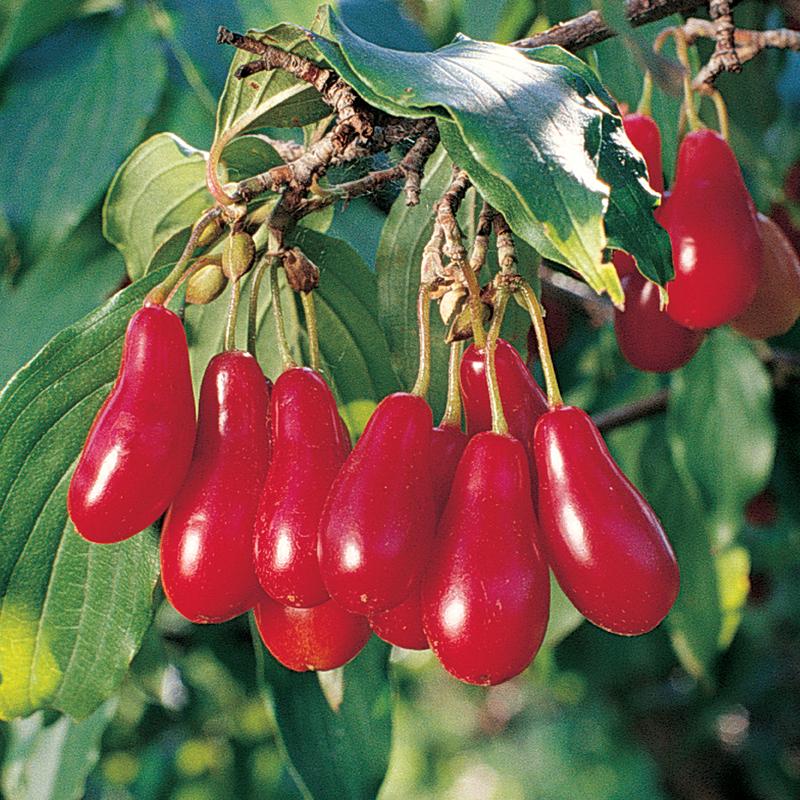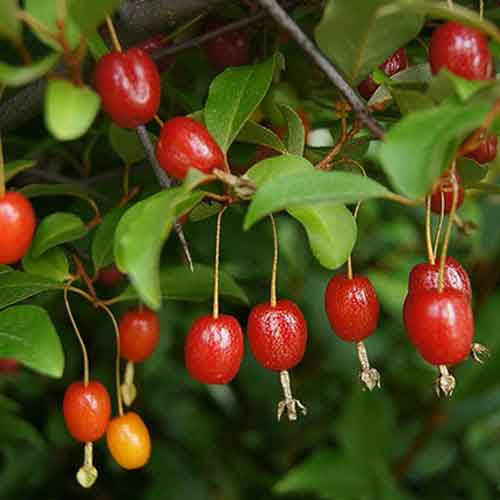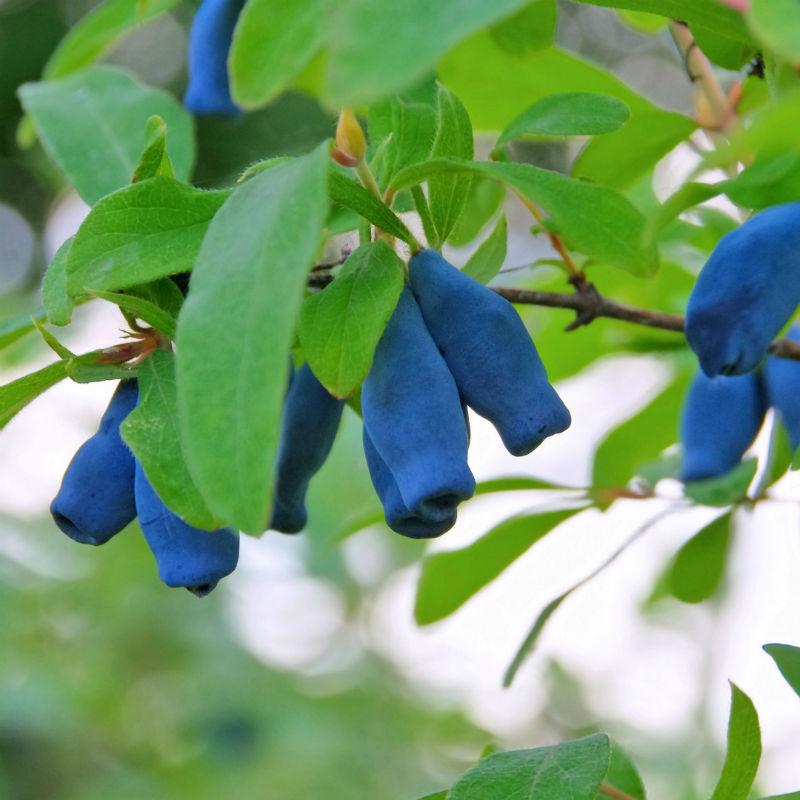This blog post was originally published as a preview to POPCORE3: Plants & Fungi We Love and What To Do With Them on March 22nd, 2018, part of POP’s Community Orchard Resilience Education series. A video version of this course is now available on POP’s YouTube channel!
Shrub: a small to medium-sized woody plant
Shrub: a cocktail or soft drink made by mixing a vinegar-ed syrup with spirits, water, or carbonated water.
Drinking-vinegars, otherwise known as ‘shrubs’ date back to colonial America when colonists used vinegar in the preservation of fruit and berries. These fruit preserves themselves, became known as ‘shrubs’ however by the 19th century, many Americans began incorporating these fruit-infused, flavored vinegars into drink recipes, utilizing the vinegar in the making of a sweet-and-sour syrup which was then topped with water, soda, or cocktails.
In recent years, the shrub has made a resurgence, as both a trendy cocktail and potential dietary and weight-loss trend. As we observe the comeback of the shrub, why not highlight its use with some of POP’s favorite fruiting shrub varieties. The three species discussed below are just a few of the diverse shrub plants grown throughout POP orchards that can present gardeners with hardy, versatile, underutilized, options for hedge-lining, screening applications, and overall garden aesthetics and health – and as a bonus, they fruit too!
General History and Growing Conditions

Cornelian Cherry (Cornus mas)
The cornelian cherry is actually a species of Dogwood, however its name originate from the small, red, cherry-like fruits resembling the gemstone, carnelian. Although native to central and southern Europe into western Asia, it is cultivated throughout the United States, specifically USDA zones 4 through 8. Relatively easy to grow, it prefers moist, organically-rich soils with sufficient drainage, in full sun to part shade. It is also shows excellent resistance to dogwood anthracnose, a fungus-caused disease, and dogwood borer, a species of moth.
Growing to approximately 15-25 feet tall and a spread of about 12-20 feet wide, the cornelian cherry is perhaps more a small multi-stemmed tree than shrub. It is one of the first of any woody plants to bloom in late Winter to early Spring, presenting a display of yellow flowers even before Forsythia.
Light-red, oval, pitted, fruits emerge in early to late spring, turning darker-red as they ripen in mid-summer. When picked prior to ripening, they present a very sour, astringent taste; however when fully ripe, they are much sweeter although still a bit tart. There are also some yellow-fruited varieties that in POP orchards seem to be sweeter and less prone to bird predation.

Goumi (Elaeagnus multiflora)
Another non-indigenous shrub, the Goumi hails from eastern Russia, China, and Japan. Although it was introduced to the United States over one hundred years ago it remains an underutilized species. The goumi is a winter-hardy shrub, semi-evergreen, easily grown throughout USDA zones 4-9, preferring medium moisture, well-drained soils in full sun to part shade. Although it will tolerate a variety of soils, avoid those that are overly wet and that drain poorly.
The goumi grows approximately 6-10 feet tall, significantly smaller and less wide than the cornelian cherry. Early spring blooms give way to small, yellowish, fragrant flowers that draw an array of pollinators. Goumi shrubs are also nitrogen-fixers, thereby releasing nitrogen following pruning, which ideally should be done after fruiting in mid to late Summer.
Goumis are often the first fruit of spring, sometimes ripening as early as May. The red, oblong, fruits are mildly astringent when not fully ripe but become sweeter and darker in color the longer they remain on the bush. Goumis have performed and produced fantastically well in POP orchards in a variety of settings.

Honeyberry (Lonicera caerulea)
Going by a number of names (blue honeysuckle, sweetberry honeysuckle, haskap), the honeyberry is native to moist, boreal forests throughout the world, including the United States, but also in Asia and Europe. Another winter-hardy shrub, it will grow across USDA zones 2-7. However, when grown south of zone 7, plants may not receive enough chilling hours in winter to produce abundant fruit. Shrubs prefer organically-rich, moist but well-drained soils. Consistent moisture appears particularly vital for the honeyberry, although once established the shrub shows some drought tolerance. Use of mulch typically helps to retain moisture around the growing area. Unlike the goumi, honeyberries are not self-fertile and therefore need to be planted in pairs or in groups.
A bit smaller than goumi, the honeyberry grows approximately 4-6 feet tall with attractive grayish-green leaves and pale yellowish-white flowers the bloom in late Spring to early Summer.
Unlike many of its honeysuckle relatives, the honeyberry produces an edible, blueberry-like fruit. Appearing in mid to late Spring, the small, teardrop, almost bell-shaped fruits, ripen in mid-Summer, presenting with a brilliant blue exterior, and dark, reddish-purple insides. Unfortunately, honeyberries have not performed well in POP orchards, perhaps because we are at the southern edge of their preferred temperature zones.
Nutritional Value and Applications
All three species present with a variety of nutritional benefits. Like many more commonly utilized berries, the cornelian cherry, goumi and honeyberry offer a rich concentration of antioxidant compounds. Despite their lack of notoriety in the mainstream fruit market, quite a bit of research has focused on these species, particularly the cornelian cherry and honeyberry, for their ability to reduce inflammation, thereby reducing risk of atherosclerosis and other disorders where high blood lipids or high blood sugar may be associated. Less work has been done on the goumi thus far, however it’s close relative, the autumn olive (Elaeagnus umbellate), has been studied a bit more and has shown to possess similar concentrations of antioxidants and ant-inflammatory compounds.
Apart from enjoying raw, there are a variety of applications for which these fruits can be utilized including jellies and jams, pies and other pastries, ice creams and sorbets, sauces, juices, or even wine.
In sticking with our ‘shrub’ theme, however, here are three original recipes featuring each of our above-mentioned shrubs in a refreshing drinking-vinegar that can be enjoyed with or without an accompanying spirit.
Although there’s much room for improvisation in these recipes, you’ll want to include the essential shrub-component – the vinegared-syrup – which comprises the following:
- Vinegar
- Sugar
- Fruit
- Herbs or other flavorings
These components are then heated together in a saucepan to dissolve the sugar and release the flavors of the fruit and other herbs or spices. For an in-depth description on shrub-making, click here.
Shrubs with Shrubs Recipes:
Old Fashioned Cornelius
We don’t know if there was an actual person named Cornelius who enjoyed the refreshing taste of Cornelian Cherry shrubs in the days of colonial America…but don’t you think there should be….
Cornelian cherry vinegar:
- ½ cup apple cider vinegar
- ½ cup brown sugar
- ½ cup cornelian cherries
- ½ Tbsp. fresh thyme
- 1 Tbsp. fresh orange juice
- 1 tsp. vanilla extract
Drink:
- 1 oz cornelian cherry vinegar
- 1 oz. bourbon (optional)
- ½ Tbsp. fresh orange juice
- 5-7 oz. club soda (or equivalent)
- Pour over ice, stir, garnish with orange wedge and fresh thyme
Dark and Goumi
The name and color of this drink give way to the ominous, angry seas and devil-may-care pirate days of yore….it’s also just a corny play on a Dark and Stormy – goumi is just so fun to say!
Goumi vinegar:
- ½ cup balsamic vinegar
- ¼ – ½ cup sugar
- ½ cup goumi berries
- ½ Tbsp. chopped, fresh ginger
- 1 Tbsp. fresh lime juice
Drink:
- 1 oz goumi vinegar
- 1 oz. rum, preferably dark (optional)
- ½ Tbsp. fresh lime juice
- 5-7 oz. ginger beer (or equivalent)
- Pour over ice, stir, garnish with lime wedge
Honeyberry Bee’s Knees
With a name like honeyberry it’s hard to pass-up the chance on making a modified version of this prohibition-era favorite featuring honey and lemon – history states that the flavors were added to less-than-ideal, ‘bathtub gin’, to mask the flavor – what better to mask the flavor here than a little honeyberry vinegar!
Honeyberry vinegar:
- ½ cup red wine vinegar
- 1/3 cup sugar
- ½ cup honeyberries
- 1 Tbsp. honey
- 1 Tbsp. fresh lemon juice
Drink:
- 1 oz honeyberry vinegar
- 1 oz. gin (optional)
- 1 Tbsp. fresh lemon juice
- 5-7 oz. club soda (or equivalent)
- Pour over ice, stir, garnish with lemon wedge
Sources:
Missouri Botanical Garden: Cornelian cherry
https://hvp.osu.edu/pocketgardener/source/description/co_mas.html
http://www.missouribotanicalgarden.org/PlantFinder/PlantFinderDetails.aspx?kempercode=f353
http://uncommonfruit.cias.wisc.edu/goumi-gumi/
This POP blog was written by nutrition educator and volunteer blog contributor Matthew Self and updated in July 2022 by POP staff.
Support us!
If you find this entry useful, informative, or inspiring, please consider a donation of any size to help POP in planting and supporting community orchards in Philadelphia: phillyorchards.org/donate